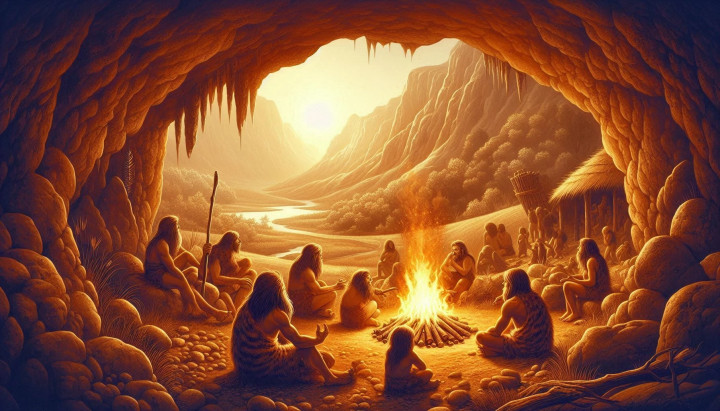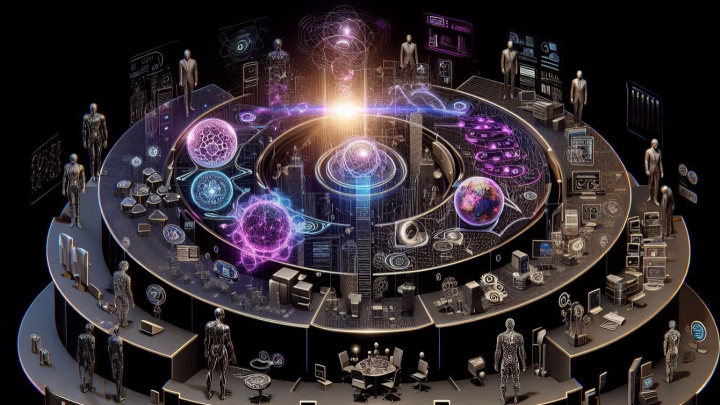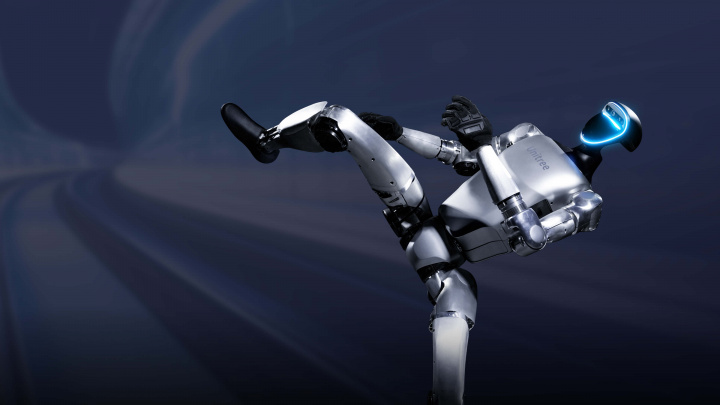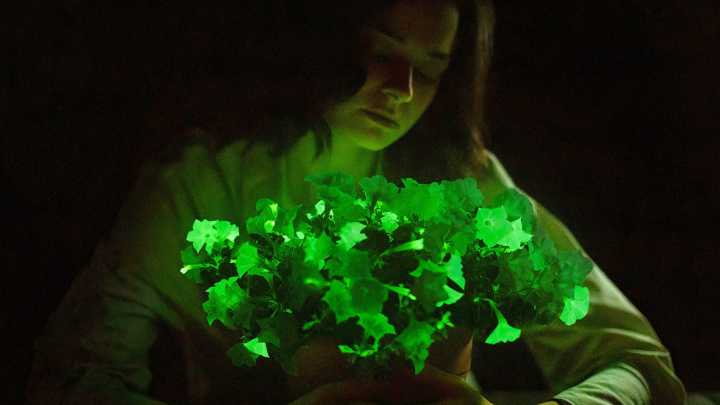The Limits of Our Tribal Brain in a Modern World
How many friends do you really have? The number of your Facebook connections might run into the hundreds or even thousands, but with how many people do you maintain a truly deep and meaningful relationship?

Robin Dunbar, a British anthropologist and evolutionary psychologist, sought an answer to this question, and his research led to a surprising yet profoundly influential theory: Dunbar's number. This number—roughly 150—represents the cognitive limit on the number of stable, meaningful social relationships we can maintain at one time. But Dunbar's number is more than a simple figure; it is a mirror reflecting our evolutionary past, helping us understand why we feel at home in some social structures and utterly lost in others.
Monkeys, Brains, and Gossip
The idea behind Dunbar's number originated from the study of primates. In the 1990s, Dunbar noticed a strong correlation between the average group size of different primate species and the size of a specific part of their brain: the neocortex. The neocortex is responsible for higher-order cognitive functions such as conscious thought, language, and—most importantly—the processing of social information. The larger a species' average group size, the larger the ratio of its neocortex to the rest of its brain.
The logic is as follows: life in larger groups requires more complex social dynamics. An individual must not only keep track of their own relationships but also the relationships among other members of the group ("who is on good terms with whom, who is feuding with whom"). This places an immense mental load on the brain. Based on this correlation, Dunbar extrapolated to humans. Using the size of the human neocortex, he calculated that the "natural" human group size falls somewhere between 100 and 230, with the most commonly cited average being 150.
Robin Dunbar is a British anthropologist and evolutionary psychologist who became world-renowned as a professor at the University of Oxford. His work centers on the evolutionary roots of social behavior in primates and humans. His most famous theory is undoubtedly Dunbar's number, which elegantly explained the cognitive limits of our social relationships to the public. However, his body of work is far more extensive. He is credited with developing the Social Brain Hypothesis, which posits that the primary driver of the human brain's extraordinary growth was not tool use, but the necessity of managing complex social relationships. Within this, his theory of gossip as "vocal grooming" is particularly prominent, which interprets the evolution of language as a tool for maintaining social bonds more efficiently in larger groups. He has written several books, such as Grooming, Gossip, and the Evolution of Language and How Many Friends Does One Person Need?, through which he has made his scientific findings accessible and engaging for a broader audience.
Evidence from the Past and Present
Dunbar's theory is not merely a mathematical deduction. It is supported by a wide range of anthropological, historical, and sociological evidence:
-
Hunter-Gatherer Societies: The average size of pre-modern tribal communities and Neolithic villages often hovered around 150 people. This was the scale at which a community could function effectively without formal hierarchies or law enforcement, relying purely on personal relationships and mutual trust.
-
Military Units: Throughout history, the size of an effective fighting unit has often aligned with Dunbar's number. The basic military unit of the Roman Empire, the maniple, consisted of roughly 120-150 men. In modern armies, the company is also in this range. This is the number of people where soldiers can still know one another, fighting as comrades for each other rather than as anonymous cogs in a chain of command.
-
Modern Examples: The Hutterites, who have lived in closed agricultural communities for centuries, deliberately split their settlements when they grow beyond 150 people. Through experience, they learned that above this threshold, social control weakens and internal conflicts arise. The company W. L. Gore & Associates (maker of Gore-Tex) is famous for never allowing more than 150 employees at a single plant to preserve a familial, innovative atmosphere.
According to Dunbar, our relationships are not uniform but exist in concentric circles:
-
~5 people: The innermost circle of close friends and family, on whom we can rely for anything.
-
~15 people: Our "sympathy group," for whom we feel deep empathy.
-
~50 people: Close friends, whom we would invite to a large gathering.
-
~150 people: The limit of our meaningful relationships. These are the people whose funerals we would attend and genuinely feel a sense of loss.
The Social Brain and "Vocal Grooming"
To understand the theory on a deeper level, we must introduce the Social Brain Hypothesis. This proposes that the human brain grew so large not primarily for tool use or navigating environmental challenges, but to manage complex social networks. Primates strengthen their social bonds through physical touch, or "grooming." However, this is time-consuming and can only be done with one partner at a time.
Dunbar argues that human language evolved as a form of "vocal grooming." Gossip, storytelling, and shared laughter allowed us to "groom" multiple people simultaneously, thereby maintaining cohesion in much larger groups. Through language, we can exchange information not only about those present but also about those who are absent, a crucial skill for managing a network of 150 people.
Applications in Psychology and Business
Dunbar's number has practical implications that extend far beyond academia:
-
Psychology: The theory helps explain feelings of loneliness and alienation in large, anonymous urban crowds. Although we are surrounded by thousands of people, our brains are still "wired" for a smaller, tribal community. From a mental health perspective, it is crucial that at least our inner circles (the groups of 5, 15, and 50) are filled. The paradox of social media is also rooted here: while it offers the illusion of connection, it often just spreads our limited social capital more thinly without actually increasing our capacity.
-
Business and Organizational Development: The W. L. Gore example perfectly illustrates the concept's power. Below the 150-person threshold, organizations tend to be more agile, internal communication is informal and effective, trust is high, and less bureaucracy is needed. This knowledge is applied in forming modern agile teams, project management, and consciously building corporate culture. A startup can easily operate like a family, but as a company grows beyond 150-200 employees, the introduction of formal structures, HR departments, and stricter rules becomes inevitable, because the web of personal relationships can no longer hold the organization together.
Skeptics and Criticisms
Like any influential theory, Dunbar's number has its critics.
-
Methodological Doubts: The most recent critiques (e.g., a 2021 study from Stockholm University) question the statistical methods Dunbar used to derive the human number from primate data. They argue the correlation is not as strong as claimed, and the margin of error is so large that the number 150 could be considered arbitrary.
-
The Role of Culture and Technology: Are these biological limits truly insurmountable? Can technology—from the telephone to the internet—allow us to push these boundaries? Dunbar himself believes that technology primarily helps us maintain existing relationships rather than create new ones. Critics, however, argue that cultural norms and individual differences play a much larger role than the theory suggests.
-
The Definition of "Relationship": What counts as a "meaningful relationship"? The ambiguity of this definition makes it difficult to precisely measure and either falsify or confirm the theory.
Dunbar's Number and Related Theories
A central question of human society is what group size allows us to cooperate effectively, based on trust. Robin Dunbar's theory provides a powerful, evolutionary psychology answer to this question, but his work does not stand in isolation. Instead, it enters into a dialogue with observations and theories from other fields, such as sociology, history, and organizational development. These thinkers, though approaching from different directions, often arrived at similar conclusions, and Dunbar's number provides a scientific explanation and a biological anchor for their insights.
-
Tipping Points in Social Dynamics – Malcolm Gladwell: In his book The Tipping Point, Gladwell examines how ideas spread. He identifies the number 150 as a "social channel capacity," a threshold where group dynamics fundamentally change. Gladwell illustrates this in practice with the example of W. L. Gore & Associates. The company's leadership discovered through everyday operational experience that when a plant's staff grew beyond 150 people, internal cohesion and the effectiveness of informal communication drastically decreased. Dunbar's theory provides the scientific background to understand why this "magic" number is around 150: it is not an arbitrary corporate policy, but a reflection of the human brain's social processing capacity.
-
The Mystery of Large-Scale Cooperation – Yuval Noah Harari: The author of Sapiens asks how Homo sapiens came to dominate the planet. For Harari, Dunbar's number is not an endpoint, but the starting problem. He accepts that the natural size of a human community based on personal acquaintance is around 150. The revolutionary innovation of Sapiens, he argues, was its ability to overcome this limitation through the Cognitive Revolution, which enabled the creation of shared myths and fictional realities (gods, nations, corporations, money). These shared stories allowed millions of strangers to trust one another and cooperate. Harari, therefore, uses Dunbar's number to illustrate the magnitude of the evolutionary leap represented by large-scale cooperation, created through the power of imagination.
-
Human Communities and 'Tribes' – Seth Godin: In the fields of marketing and leadership, Seth Godin speaks of the power of "tribes." He argues that humans have a fundamental need to belong to a group organized around a shared idea or leader. Although Godin writes about modern, technologically-connected tribes that can be global in scale, his theory builds on humanity's ancient desire for community. In this context, Dunbar's number helps explain why, even within the largest tribes, a smaller "core" or a committed inner circle often forms, with a size that frequently falls within Dunbar's limits. This core provides the tribe's true strength and stability.
-
The Size of Effective Teams in Practice – Organizational Development: Before Dunbar published his theory, leaders of effective organizations had already recognized the power of smaller units, either instinctively or through experience. Jeff Bezos's famous "two-pizza rule" at Amazon (a team should be no larger than can be fed by two pizzas) is a micro-level manifestation of this principle. Dunbar's number, in turn, provides an explanation at the organizational macro-level: why companies tend to become bureaucratic above 150-200 employees, and why formal structures are needed where personal relationships once sufficed. Here, practical observations and Dunbar's evolutionary theory perfectly complement each other.
These examples show that Dunbar's number is not just an interesting anthropological data point, but a concept that bridges biology, sociology, and practical business life. It helps us understand the invisible limits and forces that shape our social relationships and the functioning of our organizations.
The Digital Extension and the Emotional Bottleneck
One of the most compelling questions of the digital age is whether technology—especially social media—can break through the limits set by Dunbar's number. Here, it is useful to distinguish between two dimensions of relationships: "cold" data management and genuine emotional connection. Technology undoubtedly expands our capacity for data management. Facebook reminds us of the birthdays of hundreds of acquaintances, and LinkedIn tracks the career paths of our professional network. On this level, the upper limit of Dunbar's number can indeed be pushed; servers "remember" the relational data on our brain's behalf.
However, this is merely an extension of appearances. Maintaining an emotional bond is not a problem of data management, but one of investing time and emotional energy. Building empathy and trust, and processing shared experiences, require deep cognitive and emotional processes whose capacity is likely much more rigidly tied to our biological hardware. The digital world acts as a kind of social "exoskeleton"—an external frame that allows us to "carry" more connections, but it does not increase the load-bearing capacity of our hearts and minds. We may be able to congratulate 500 people on their birthdays with an automated message, but the innermost circles of Dunbar's number—the 5, 15, or 50 people for whom we would genuinely worry in a crisis—likely remain stubbornly resistant to this digital inflation. Technology inflates the network of weak ties, while perhaps even draining from the most precious resources needed for strong ties: attention and genuine presence.
More Than Just a Number
The debate surrounding Dunbar's number will likely continue. However, the true value of the theory lies not in whether the number is exactly 148 or 152. The power of the concept is that it reminds us of a fundamental truth: we are biological creatures whose social needs and limits were shaped by hundreds of thousands of years of evolution.
The modern world, with its global networks, metropolises, and digital platforms, often ignores this heritage. Dunbar's number is a warning: no matter how high we build our skyscrapers or how immersive our virtual realities become, deep within our brains still lives a tribal being who feels most at home in a community of no more than 150 people. Understanding and managing this tension is one of the most important psychological, sociological, and organizational challenges of our time. Dunbar's number is not a prison; it is a map that helps us navigate our own human nature.





